Hayden Falls Park
Hayden Falls Park is this little boardwalk over in Hilliard that takes you through this gorge habitat with a 35 foot waterfall at the end of the board walk. To stray off the beaten path is a little difficult as you have to do some maneuvering to get off the boardwalk but nothing too dangerous. The boardwalk starts out Hayden Run Road there a well placed fence sits so people do not fall down the gorge. The boardwalk beings with a steep descent into the gorge a large flight of stairs takes you down to a flat boardwalk that spits out at this waterfall. There you are free to roam the bottom of the falls and explore the large stream that stems at the base of the waterfall. Here is a trail map for Hayden Falls:
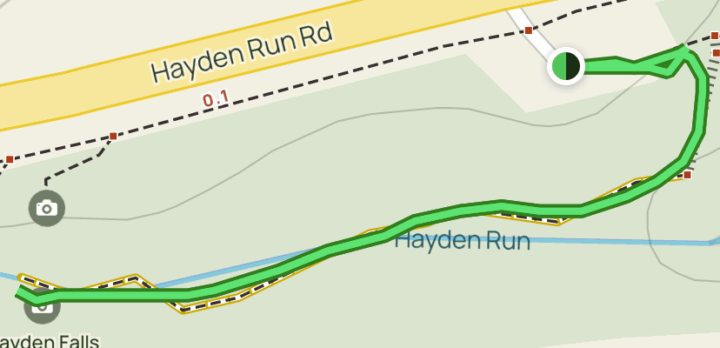
Lastly I was able to locate some Poison Ivy when exploring the base of the board walk. It was not particularly difficult to find it was however pretty difficult to photograph the ones on the trees due to the dense foliage. Luckily the base of the board walk did have some just sitting there. You can see the three leaflets pretty distinctly sitting by the creek. I did not poke around for the root however in fear of actually “getting” Poison Ivy.
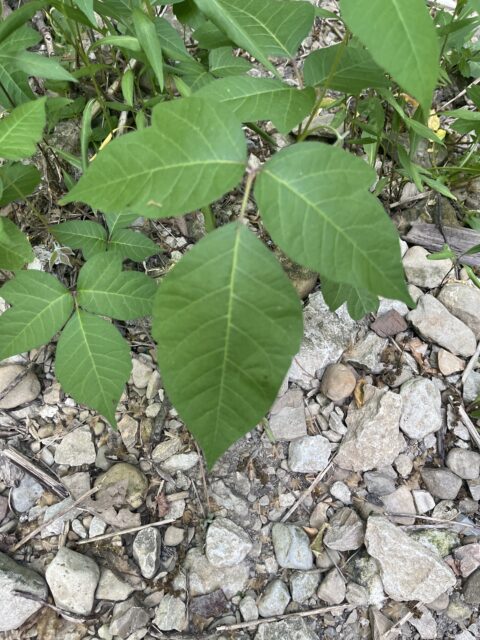
Poison Ivy
Flowers and Inflorescences
The first of the flowers I was able to find was the Great Waterleaf, Hydrophyllum appendiculatum. I found it along a cliff side next to a stream. It is a member of the family Boraginaceae with a 5 lobed calyx, 5 lobed corolla, 5 androecium and 1 gynoecium. The gynoecium type is epigynous and it is syncarpous. The fruits of these flowers are two chambered capsules with 1 to 3 seeds. The inflorescence type is a cyme.
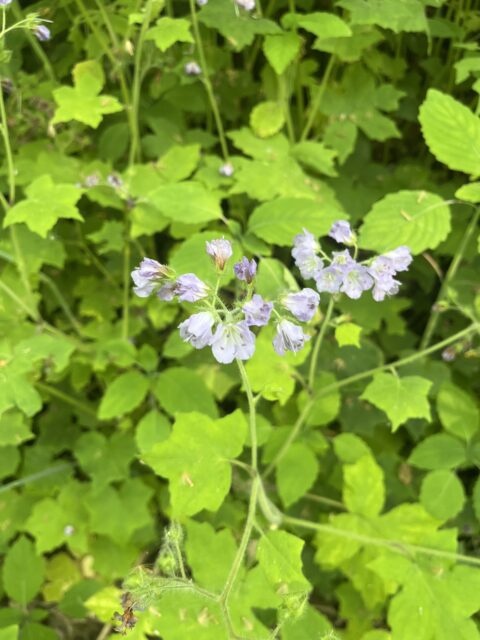
Up next is the Eastern Fleabane, Erigeron strigosus. This flower I found at the top of a cliff face in front of a fence to keep people from falling down the gorge, (yikes). It is a member of the Asteraceae family giving off the appearance of one large flower when it actually is a bunch of tiny flowers inserted into a common receptacle (radiate capitulum). Anywhere from 40 to 100 flora heads can be counted on Eastern fleabane. Each one with 5 fused corolla, 5 fused androecium, and 2 epigenous, syncarpous gynoecium. The fruit is described as a nondescript seed head, and the inflorescence type is a panicle.
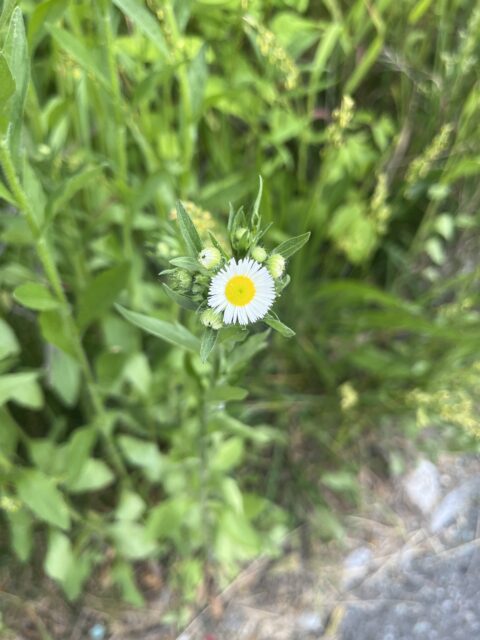
After that I found some Sulphur Cinquefoil, Potentilla recta. It was on the edge of a cliff in a spot they have fenced off. But not well enough so that I couldn’t get to it. It is a member of the Rosaceae family with 5 calyx, 5 corolla, 30 androecium, and many variable number of perigenous, apocarpous gynoecium. The fruits are a receptacle of achenes and the inflorescence type is cyme.
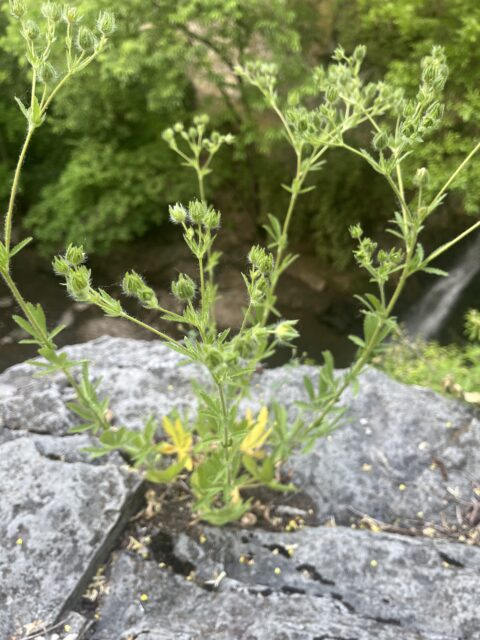
Lastly I found some Butterweed flowers, Packera glabella. I found it by a big rock next to the boardwalk going down the gorge. It is a member of the Asteraceae family giving off the appearance of a large flower when it actually is an aggregate of a bunch of tiny flowers with a radiate capitulum. The flower can have anywhere from 5-15 flora heads and each one consists of 5 fused corolla, 5 fused androecium, and 2 epigenous, syncarpous gynoecium. The fruits of these guys are achenes that replace the flower heads.
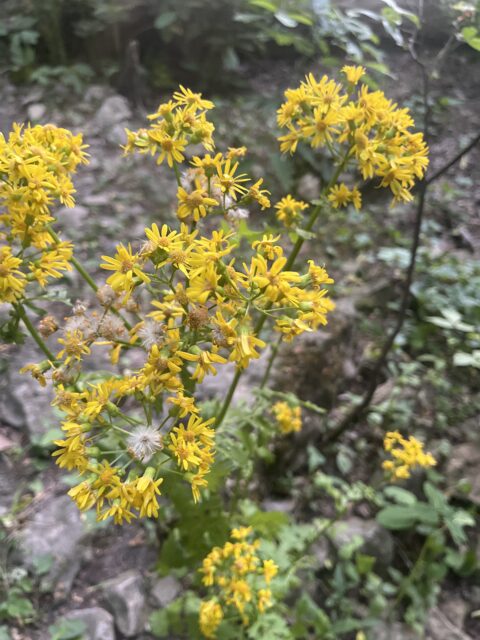
Invasive Species
We start off with that dastardly Amur Honey, Lonicera maackii. These can often be confused with native honeysuckle but a way to tell the difference is the non native honeysuckle has a hollow pith. The plant has opposite leaves with a long pointed end. These give way to long tubular flowers which turn into bright red berries that birds and deer like to eat. It is native to temperate Eastern Asia but was introduced to reduce erosion but quickly escaped and began running wild. It has many competitive advantages to native Ohio plants including longer growing season, adaptability to soil and shade, fast growth, and finally the leaves, roots, and fruits all exude chemicals to reduce germination of native species. Pulling small plantlets is somewhat effective but burning and chemical herbicide are the most effective against this species.

Following that we have Multiflora Rose, Rosa multiflora. The flowers are white with 5 heart shaped petals and it often grows as a shrub. It will have 7-11 sharply toothed leaflets and its fragrant flowers make way for bright red rose hips that birds love to eat. It is native to eastern Asia and was introduced as an ornamental before further being used to prevent erosion, as an oriental due to the quite pretty flowers, and as a natural fence for livestock . They are considered invasive however due to the sheer volume at which it is able to reproduce. It is a shade-tolerant monoecious plant that ultimately takes up too much space, has not natural predators, and many vectors in which it is able to distribute its spawn. The best ways to get rid of it is to manually dig it out or treat with herbicide often which has to be done more than once. Biological controls are available however they do pose a threat to native roses as well.
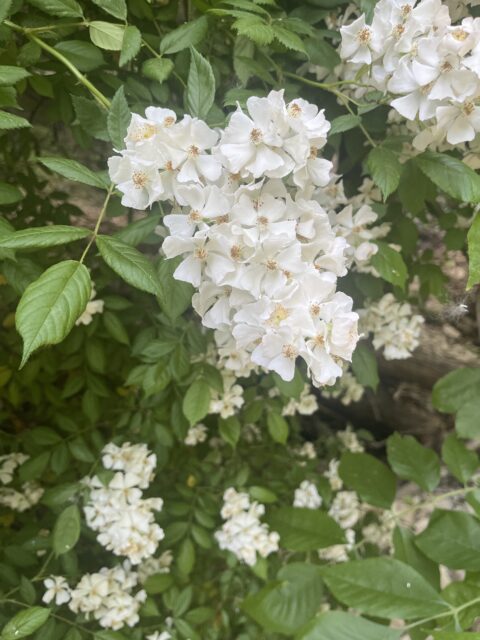
After that we have Japanese Stilt Grass, Microstegium vimineum. The grass has asymmetrical leaves that are off-center with the stem, a silvery midrib down the leaves, and is smooth on both sides. This monocot is native to Eastern Asia and was believed to be introduced through its use of packaging porcelain. This species is considered one of the most damaging invasive species here in the United States due to its versatility in conditions in which it can thrive in. The best ways to get control the plant is to catch it before the seeds germinate in early flower stage. Hand pulling and moving during this time is highly effective when done at the right time. Chemical means are also available as well.
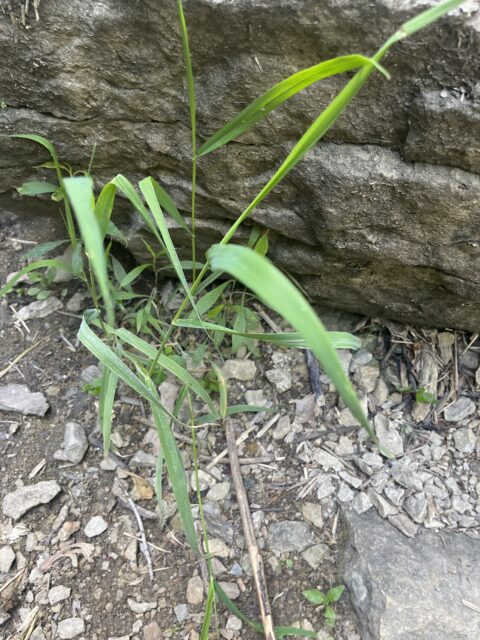
Lastly we have Yellow Sweet Clover, Melilotus officinalis. They are erect, biennial pea plants. During the first year they grow into a small multi branched system divided into 3 finely toothed leaflets. During the second year they extend their roots and take on a more bushy appearance. The flowers are borne on irregular spikes at the ends of elongated stems and the fruits are small ovoid pods. These clovers are native to the Mediterranean region and were brought for their forage and honey products but they are especially useful for nitrogen enrichment in agriculture. They are considered invasive however because they are drought resistant, in their second year they block out the sun for other plants as they can grow to around 6 to 7 feet, and they produce an ungodly amount of seeds from one plant. They can produce up to 350,000 seeds and the seeds can stay viable for up to 30 years. The best way to deal with first growing season is pulling them or spraying them but once they hit the second season the roots are brittle and break when you try to pull them so you have to spray them in order to kill them.
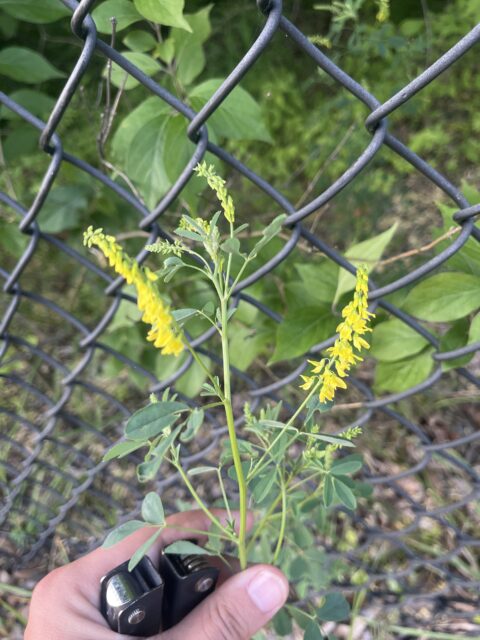
Woody Plant Fruits
First up we have Box Elder, Acer negundo. The fruits I found were green samaras on drooping racemes. The tree itself has pinnately compound leaves that usually have 3 to 7 leaflets which is unusual for a maple tree. The flowers of boxelder are drooping yellow green racemes which eventually give way to the fruits. For the most part when you see samaras and those opposite lobbed leaves maples first come to mind.
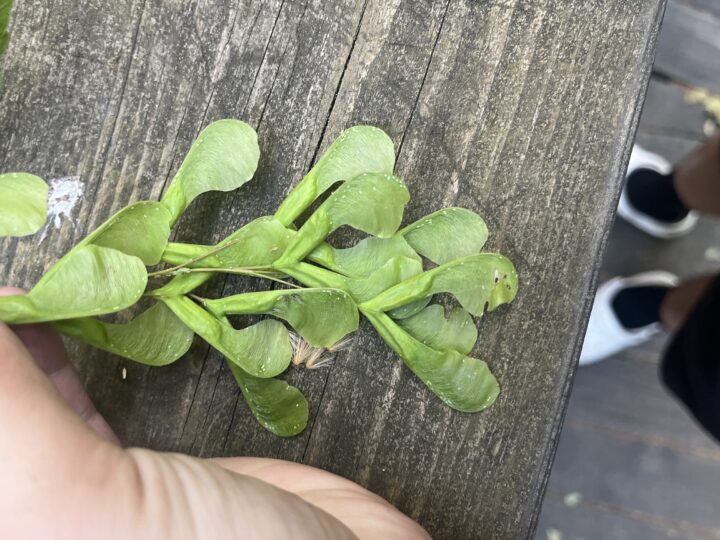

Up next we have Eastern Redbud, Cercis canadensis. The fruits I found were of legumes hanging from the branches of the tree. The tree itself has these alternate heart shaped leaves which screamed redbud. The flowers of redbuds are where they get their name because of the dark pink color they have. But what gives you a hint is they flower all down the branch even on the trunk of the tree itself. So to see the legumes so far back on the branches gives you some evidence supporting this as a redbud tree.

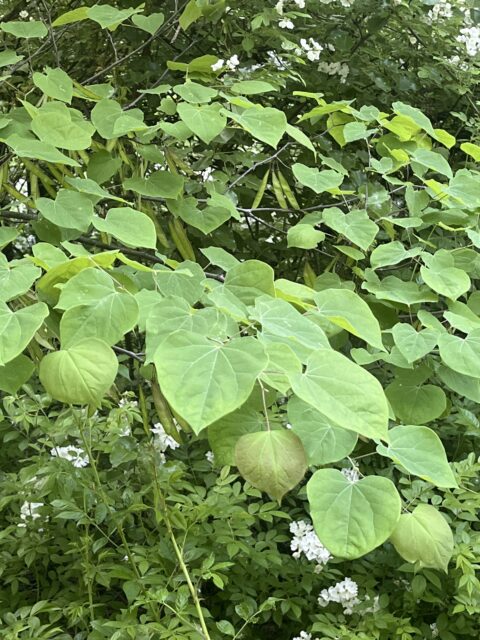
After that we have Red Buckeye, Aesculus pavia. The fruits I found on this guy were green nuts with spikes forming around them. The tree itself had opposite palmately compound leaves of 5 leaflets. It would be a crime if by now I had not been able to figure out that this is a buckeye tree. I believe it is a red buckeye tree because when I snapped the branch I did not get a skunky smell. The flowers for buckeyes are red tubular shaped flowers kind of unusual shape.
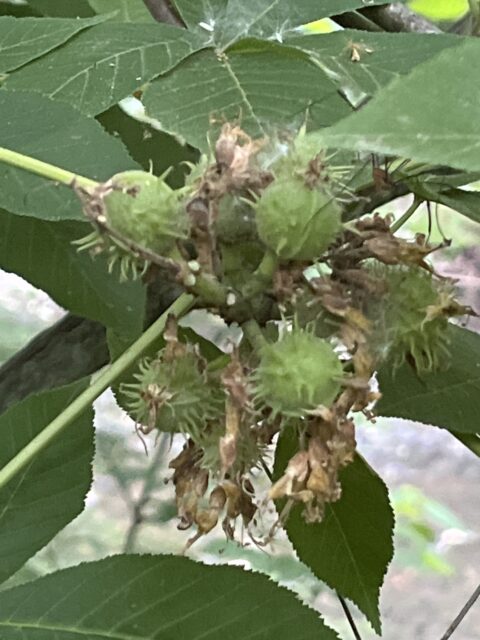
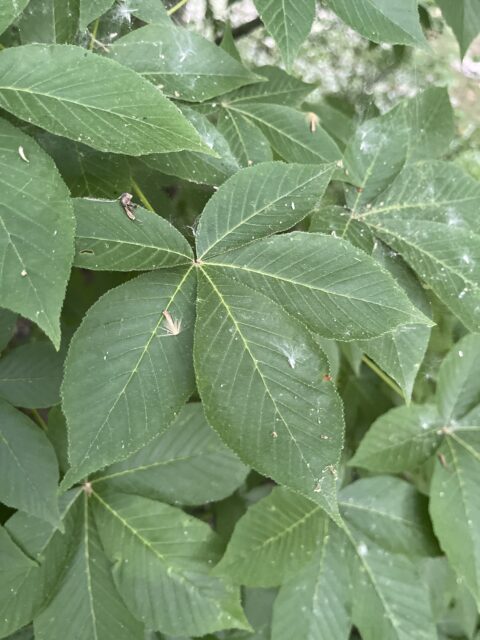
We round it out with Fragrant Sumac, Rhus aromatica. The fruits I found on this guy were hairy reddish green drupes. Unusual indeed I had some trouble identifying this plant I must admit. The leaves varied in shape but the pattern of 3 leaflets remained the same with a glossy look to them. I knew it wasn’t Poison Ivy due to the fruits being different. After some work I eventually found it to be Fragrant Sumac. The flowers are actually bisexual with the male having yellow catkins and the female flowers being yellow panicles at the ends of branches. These give way to the hairy drupes seen.
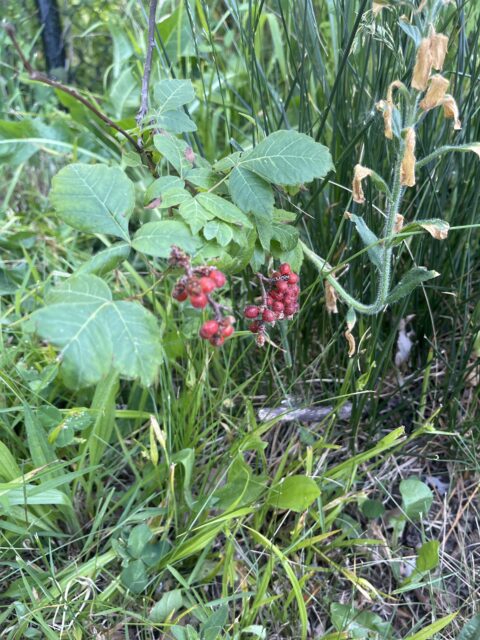
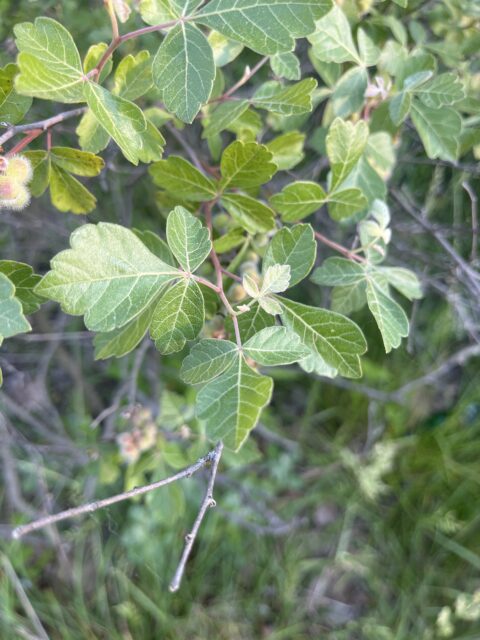
Mosses and/or Lichen
We were asked to find and identify 4 Mosses or Lichen here is what I was able to find.
First up I found Poodle Moss, Anomodon attenuatus.
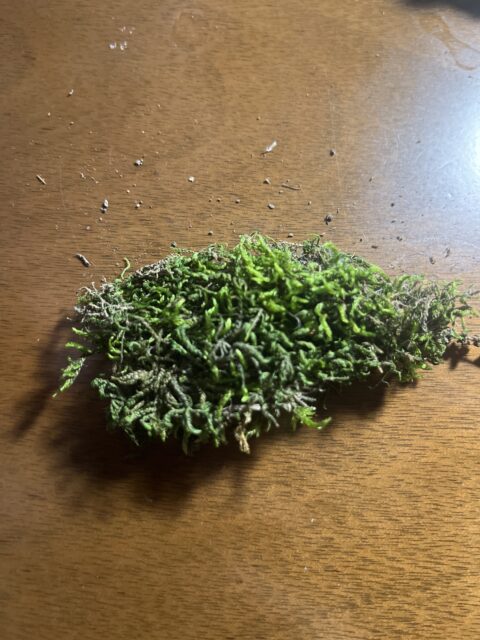
Poodle moss
Next we have Broom Moss, Dicranum scoparium.
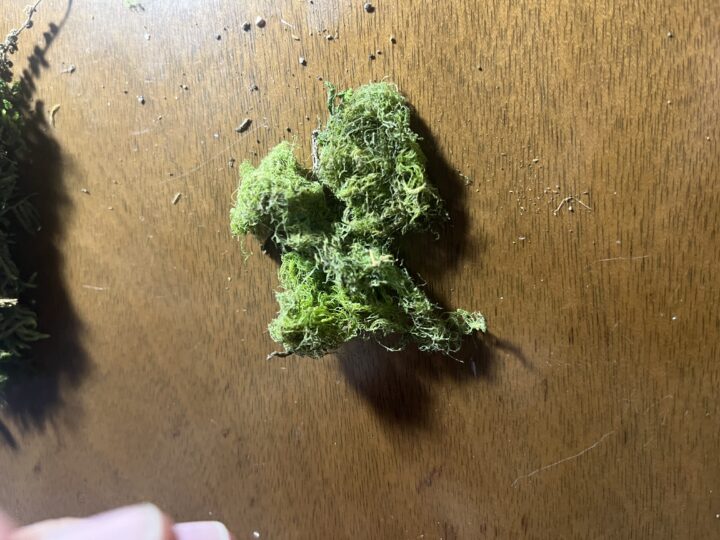
Broom moss
After that we have Tree Moss, Climacium americanum.
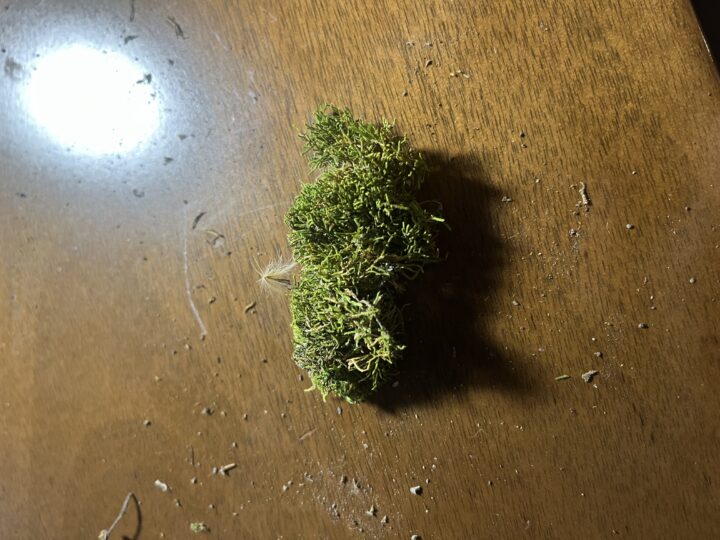
Tree moss
Finally we have Hooded Sunburst Lichen, Xanthomendoza fallax.
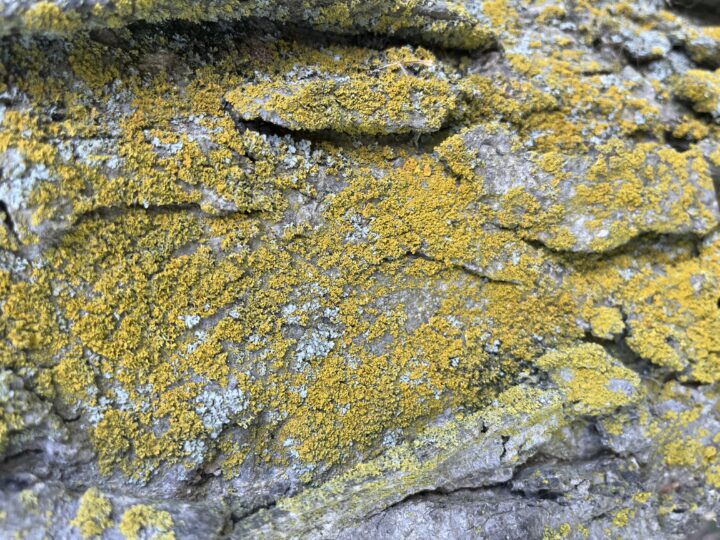
Hooded Sunburst Lichen
